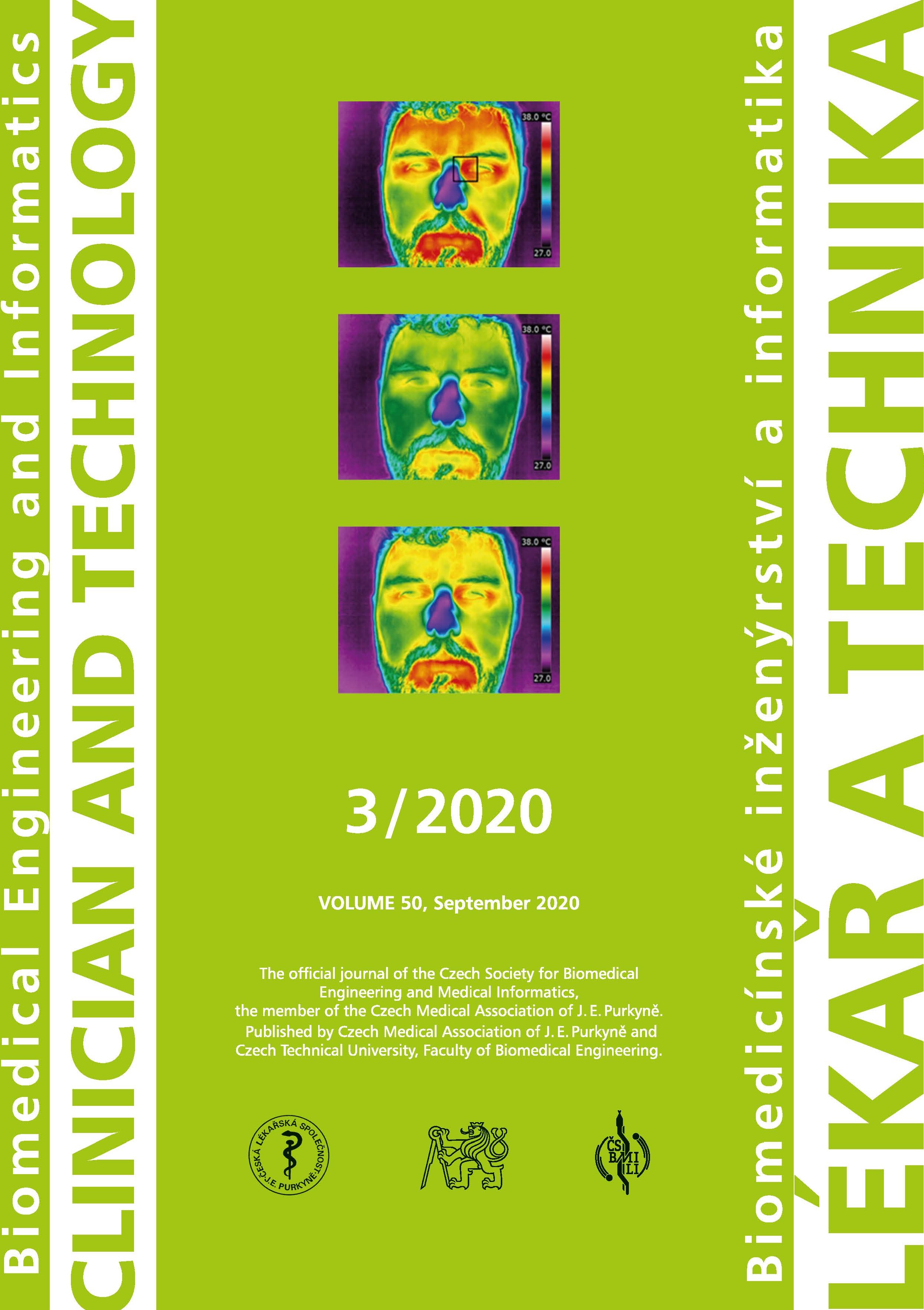PROTECTIVE ASPECTS IN CONTACTLESS INFRARED THERMOGRAPHY FEVER SCREENING
DOI:
https://doi.org/10.14311/CTJ.2020.3.03Abstract
Main symptoms found in patients with same diseases as for example COVID-19 is febrile. The infrared thermography (IRT) represents a fast measurement in case of screening in public places. One of the limitations of IRT is the resolution of sensor, which has close connection with the distance between camera and ROI. To maximize the effectivity of resolution of the camera is to reduce the distance from the object. The aim of presented study showed the possibility how to protect the camera or medical staff that operates the device against potential infection or contamination from the person with infection. Two protective foils of different thickness (40μm; 9μm) were tested as a barrier between the IRT and the ROI (black body model and human face). Even though the results have shown that the transparent foils decrease linearly the measured value of the temperature, it can be used as a protective barrier between IRT and the object if an appropriate recalculation is done during analysis of IRT images. Results are acceptable in the case of 9μm foil especially. The authors see this possibility as a minor concession from IRT standards but as a great help in health protection. The transparent foil can be used as protective barrier of the infrared camera.
Downloads
Published
Issue
Section
License
Copyright (c) 2021 Vladan Bernard, Erik Staffa, Aleš Bourek, Marek Dostál, Vojtěch Mornstein, Jana Pokorná

This work is licensed under a Creative Commons Attribution 4.0 International License.
Authors who publish with this journal agree to the following terms:
- Authors retain copyright and grant the journal right of the first publication with the work simultaneously licensed under a Creative Commons Attribution License (https://creativecommons.org/licenses/by/4.0/) that allows others to share the work with an acknowledgment of the work's authorship and initial publication in CTJ.
- Authors are able to enter into separate, additional contractual arrangements for the non-exclusive distribution of the journal’s published version of the work (e.g., post it to an institutional repository or publish it in a book), with an acknowledgment of its initial publication in this journal.
- Authors are permitted and encouraged to post their work online (e.g., in institutional repositories or on their website or ResearchGate) prior to and during the submission process, as it can lead to productive exchanges.
CTJ requires that all of the content of the manuscript has been created by its respective authors or that permission to use a copyrighted material has been obtained by the authors before submitting the manuscript to CTJ. CTJ requires that authors have not used any copyrighted material illegally, as for example a picture from another journal or book, a photo, etc. It is the author’s responsibility to use only materials not violating the copyright law. When in doubt, CTJ may ask the authors to supply the pertinent permission or agreement about the use of a copyrighted material.
The opinions expressed in CTJ articles are those of authors and do not necessarily reflect the views of the publishers or the Czech Society for Biomedical Engineering and Medical Informatics.


